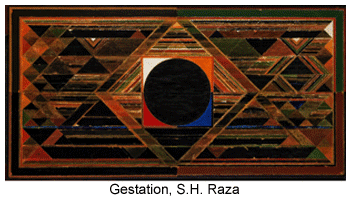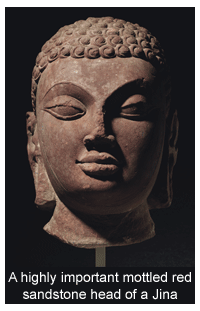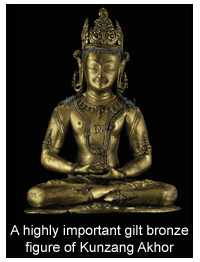- Ah, the heat
- Guest Editor’s Column
- Art Moderne: Art Deco Furniture
- Lithograph Tin Toys
- Film Memorabilia
- Creative Impulse
- Hard Talk
- Possibility of Democracy in China
- In the News
- Artist Index and Statistics
- Market Insight
- Auction Reports : What happened
- Auction Reports : what's forthcoming
- Art Bengaluru
- Art’s Eye-view
- The month that was
- Photo Feature
- Roerich bridges Indo-Russian Cultural Relations
- Image and Symbol: Painters' Perceptions
- Image and Symbol: Sculptors' Perceptions
- My Window Shut to Open
- Paramjit Singh
- Mrinalini Mukherjee
- The Spirit of A Butterfly
- Have I Ever Opposed You?
- S(outh) E(ast) A(sia)
- Splitting the Other
- The Things That Happen When Falling in Love
- Millijunction
- Terminology
- Know your Act
- Different hues of Aakriti
ART news & views
Market Insight
Volume: 2 Issue No: 3 Month: 4 Year: 2010
As we wind up the financial year of 2009-10, it may be worthwhile to see how the lessons of the Global Economic crisis has led to the shedding of excess fat which the art and auction markets had indeed gathered in 2007, that finally reached a saturation point in the first half of 2008. Comparative price analysis of UK, France, USA and the rest of the world throws up interesting observations.
 '2009-Art Market Trends', published online by 'artprice' shows the highest growth in prices in America, followed by the UK, with France registering a more grounded price index, falling below even the world average, which rose mainly due to the excesses of auction houses in America and the UK. Taking a base of $100 in July 1990, at the end of 2007, the global price index was 15% higher than in 1990. The price increase was particularly spectacular in the United States where art prices rose 88% between 1990 and 2007.
'2009-Art Market Trends', published online by 'artprice' shows the highest growth in prices in America, followed by the UK, with France registering a more grounded price index, falling below even the world average, which rose mainly due to the excesses of auction houses in America and the UK. Taking a base of $100 in July 1990, at the end of 2007, the global price index was 15% higher than in 1990. The price increase was particularly spectacular in the United States where art prices rose 88% between 1990 and 2007.
In 2008 the market nose-dived somewhat symbolically just after Damien Hirst took
200 works out of his studio and sold them directly to the public through Sotheby's, towards the middle of September 2008. Considering the newness of the works offered the results were almost surreal: $171.6m from a single sale! But while Hirst was celebrating his latest success, the repercussions of the collapse of Lehman Brothers were spreading around the world. After September 2008, the financial crisis contaminated the art market and the entire market mechanism began a sharp deceleration. Unsold rates rose to nearly 43% in the second half of 2008 vs. a long-term average of 30%-35%. Auctioneers had still not adjusted their estimated price ranges which were already printed in their catalogues. At the beginning of 2009, they started to adapt their price targets with less extravagant estimates.
After the years of euphoria, the major auction houses - principally Christie's and Sotheby's -  made considerable concessions to avoid a complete freeze of the market, because while a contraction of prices was tolerable, a complete cessation of market activity would have been disastrous. To minimise their losses in 2009, the auctioneers took a number of measures including staff reductions (approximately 20% at Christie's). Apart from internal restructuring measures which also involved merging several departments (Old Masters & 19th Century art at Christie's, “thematic” sales at Phillips de Pury & Company), the auction houses lowered their reserve prices (Christie's International announced a minimum 10% reduction in December 2008), revising their target ranges, reducing their catalogues by number and by density (of lots proposed), and considerably reducing their price guarantees.
made considerable concessions to avoid a complete freeze of the market, because while a contraction of prices was tolerable, a complete cessation of market activity would have been disastrous. To minimise their losses in 2009, the auctioneers took a number of measures including staff reductions (approximately 20% at Christie's). Apart from internal restructuring measures which also involved merging several departments (Old Masters & 19th Century art at Christie's, “thematic” sales at Phillips de Pury & Company), the auction houses lowered their reserve prices (Christie's International announced a minimum 10% reduction in December 2008), revising their target ranges, reducing their catalogues by number and by density (of lots proposed), and considerably reducing their price guarantees.
The price rationalization is already beginning to show its results as the financial year comes to an end. The March 9, 2010 sale of Contemporary Art at Sotheby's registered a pre-2008 normal range of unsold lots at 32.1%. Commenting on the sale, Jennifer Roth, Director of Fine Arts at Sotheby's said, “We were very pleased with the result, which was comfortably within the presale estimate of $4.8/6.9 million. It was exciting to see a mix of buyers that was almost evenly split between private collectors and trade. Dealers were hungry for fresh property and willing to compete, signaling the positive momentum in the commercial art world.”
Similarly, two auctions held at Christie's on March 11 and 16, 2010, dealing with entirely different tastes and subjects (the first being Post-war and Contemporary Art, and the latter 20th Century Decorative Art & Design) showed similar optimism among buyers, with both registering less than 15% in terms of unsold lots. After the March 11 sale, Koji Inoue, Head of First Open Sale at Christie's was almost echoing Sotheby's Roth, when he said, “The excellent results obtained reflect an independent and stable market that clearly views art as a viable store of value.”
Both Inoue and Roth's statement only point at one thingthat the market has learnt its lessons and buyers are again getting their confidence back.  This, as analysts have already started predicting, may be the flavour of 2010-11a carefully crafted market, with buyers who are a lot more cautious and informed.
This, as analysts have already started predicting, may be the flavour of 2010-11a carefully crafted market, with buyers who are a lot more cautious and informed.
Meanwhile Indian contemporary art is still being led by M F Husain. At the recently concluded Saffron Art Spring auction, Husain's Untitled commanded a price of $448,500. Consisting of Husain, Francis Souza, Raza, Padamsee and Manjit Bawa among others, the auction showed a buoyant result with 75 % being sold and 60% of lots registering a price above the higher estimate.
At Christie's, the sale of South Asian Modern and Contemporary Art achieved $8,937,000 being 82% of lots sold. The top price of the sale was Syed Haider Raza's Gestation, 1989, realising $1,202,500. In another Indian art sale at Christie's -- Indian and Southeast Asian Art – a figure of $6,131,000 was achieved. 75% of the lots sold at the auction. The top price of the sale was a Gupta period mottled red sandstone head of a Jina, from Mathura, Uttar Pradesh, from the mid 5th century, that realized a price of $986,500.
It is therefore a good and pragmatic way to kick-off 2010, both in India and abroad. The tides, it seems, are turning for the art market.